It’s getting hotter! If you don’t want to be tortured by severe sunshine, what about running in the mountain? But how?
“SUPERACE Trail Running Camp” held several days ago invited professional trail runners to lead the trail run beginners into the mountain and tell us some important skills of trail running.
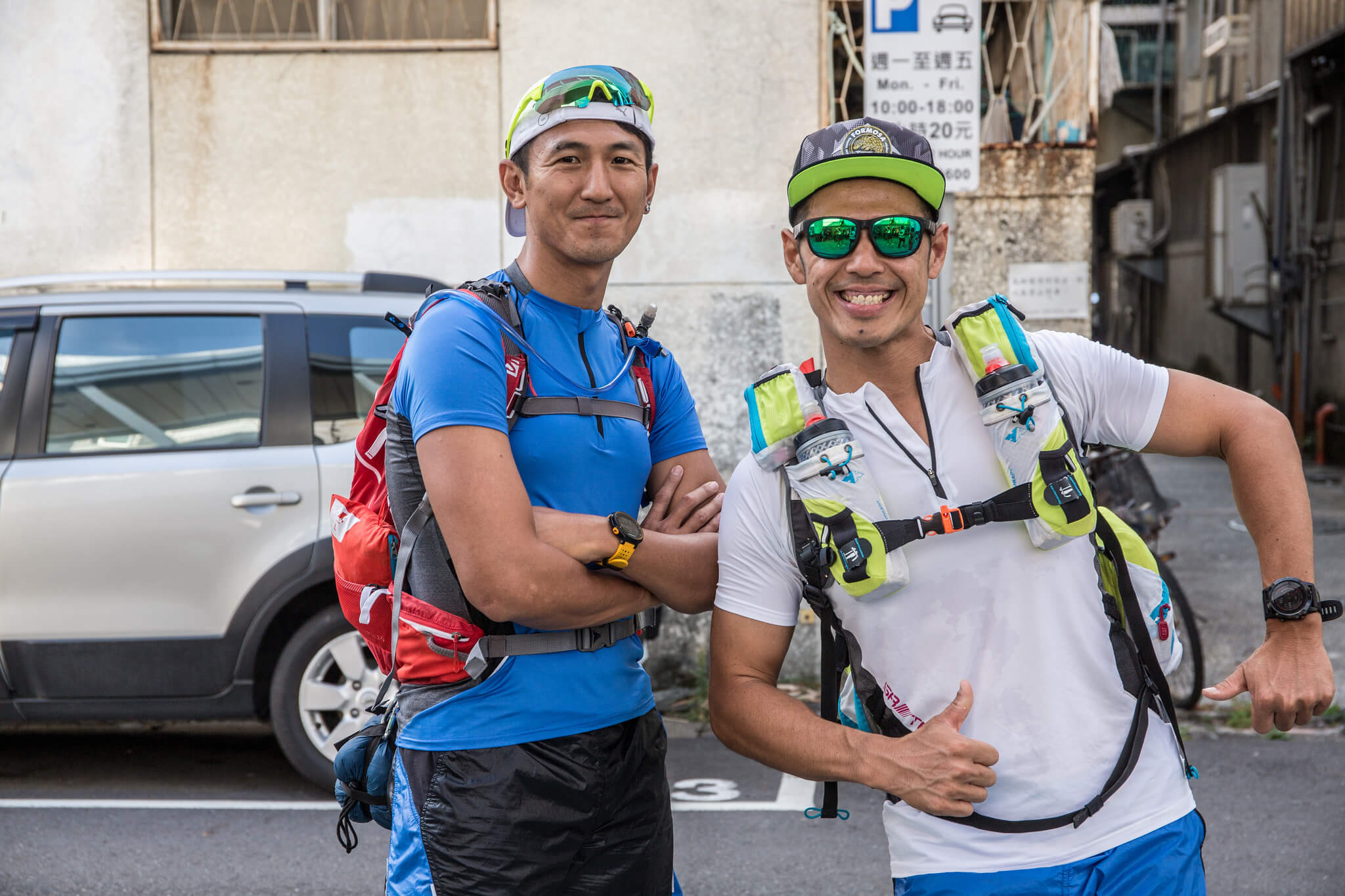
The Coaches
L: CEO of Tiny x Studio, SUPERACE Taiwan station runner - Sun Guo Xin
R: DWD triathlon player, gym coach – Lee Mario
TERRAIN 1 │ STAIRS
Q1:Should I Use the Handrail?
Use it only when downstairs!
Why? Because when using the handrail upstairs, your power is spread to different direction, and turn out to be a waste of energy.
On the other hand, some people are afraid of going downstairs for the height and the strike to their knees. By holding the handrails, you are able to slower down under control and decrease the power in attack.
Basic Upstairs Skills
1. Support on your lap with your hands to save energy
2. Some people might use walking sticks. Notice also that, it’s even more tiring if using them incorrectly.
3. Most simple way of doing this: just walk upstairs, with your body leaning forward a bit.
Q2:One or Two Stairs at Once?
Depends on the ratio of your body: “Top: Bottom.”
If your body ratio is 1:1, having one stair at once is more proper; if you have longer legs, try two stairs!
Understanding your body, advantages and weaknesses are fairly important in training. Gain your muscles abilities and improve your skills according to those. For instance, if you’re more suitable for taking one stair at once, you can practice to hop upstairs in order to speed up.

Q3:What if you have burden?
Take Mario for example, if he have a big backpack, he takes two stairs at once; when taking simply water with him, he takes one instead, decreasing the time of his foot touching the ground and increase the speed. Remember not to pull your laps too high in case of unnecessary waste of energy.
Q4:Run or Walk Upstairs?
Depends on the distance, inclination and how much energy you have.
If it’s steep, you are suggested to walk and save energy for the road afterward. Sun reminded, “when thinking about surpassing others, please remember to keep yourself alive till the end.”
Smooth and stable are the two key elements when going upstairs. Not too fast, not too slow. The training of your lap muscles is pretty important as well.。
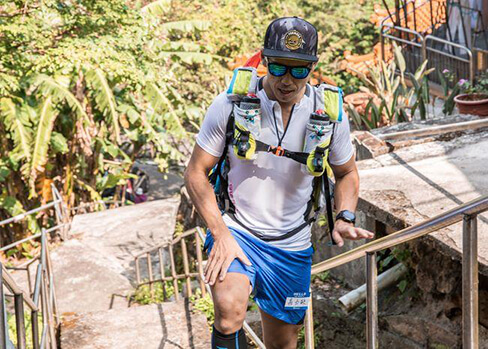
TERRAIN 2 │ TREE ROOTS
Q1:Getting Over or Step on It?
It depends on the density of the tree roots!
Approach with your mid-footpad if you step on them, and then bounce up. Caution not to get hurt by being trapped or losing control of power in different height. One important principle is keeping focus on the upper body to decrease the impact!
Q2:What of the main road is blocked by people?
- Cross the crowd from aside.
- Shout out “EXCUSE ME!!!” and surpass from another unpopular route.
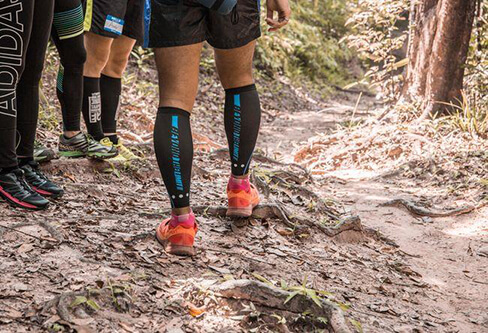
TERRAIN 3 │ SOIL DOWNHILLS
Q1:By What Pose?
Trail running create great impact to knees and ankles. In order to decrease the impact, runners should keep the body straight with legs slightly bended to buffer
Q2:How to make a turn in downhills?
You can practice side moving. When encountering turning points, turn your body first. Your legs will be led and make a turn by instinct.
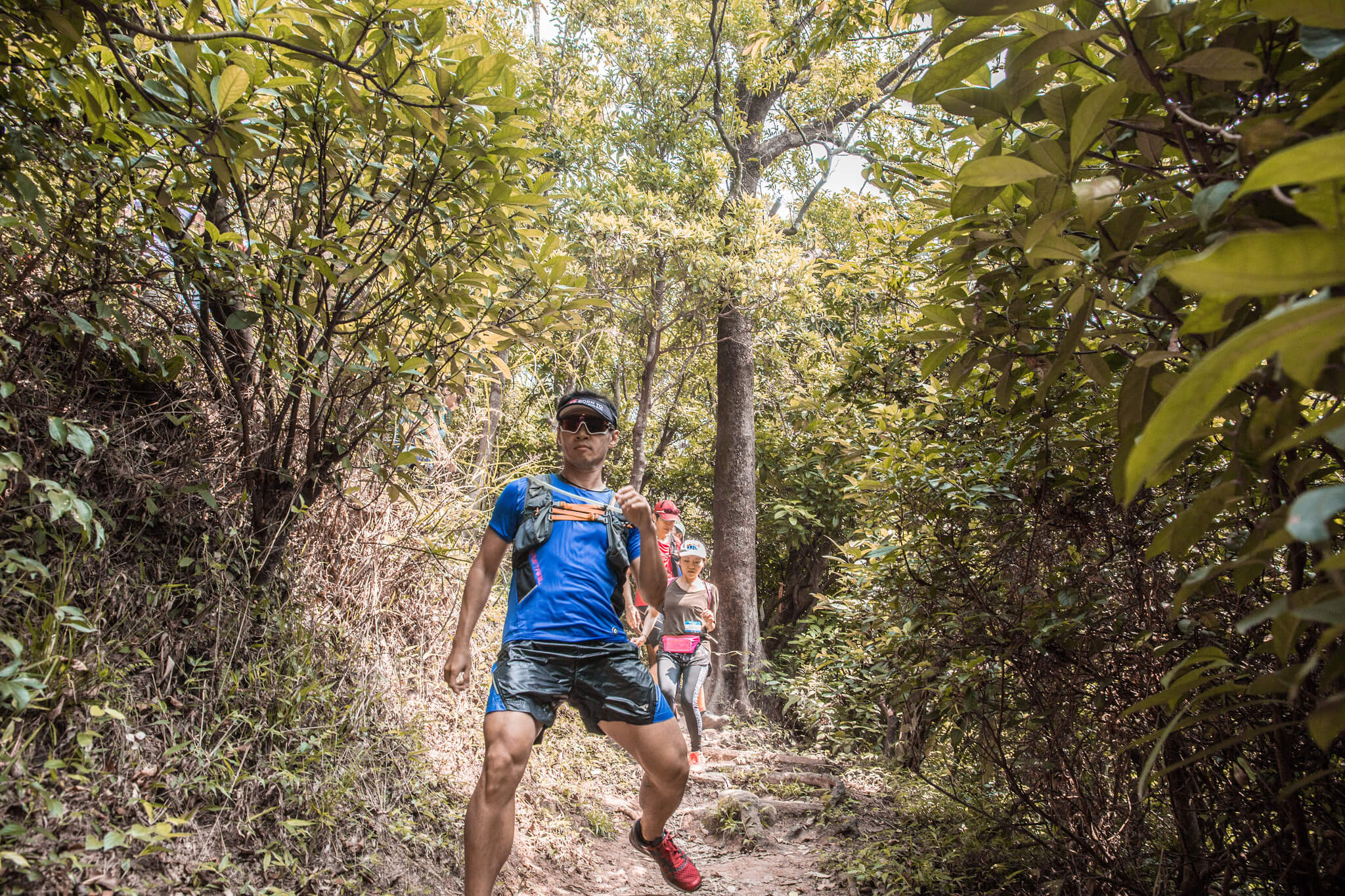
TERRAIN 4 │ ROCKY DOWNHILLS
Q1:Pick the Right Stepping Point
Picking the right stepping point is important in rocky downhills. Some might decide to down straight, some might prefer landing on flat platforms. What makes the difference in choosing? You skills and ability! See how much you can do, and pick the most suitable way to go. It not just about the physical strength, it’s also about your IQ.
Q2:How to Go Down if You’re not Dare to Run Downhills?
Exploit both your hands and foot. Grab tree sticks or support by rocks aside if needed.

Gear Suggestions
1. Trail Running Backpack
definitely needed no matter what distance you’re running. Hydration backpack can be applied in short-distance running; think about how much need in long-distance run. 20 ml is the lease you have to carry. Fill it out completely, or it’ll cause troublesome sloshing in running.
2. Water Bottle
no plastic bottles with little container.
3. Food and Supplies
some sweet, high-calorie and light-weighted food such as energy bars, energy gels and dry meat would be good for your short-distance run; in stage races, bring some dried-food packs and easy utensils with you.
4. Rescue Blanket
in case of losing temperature.
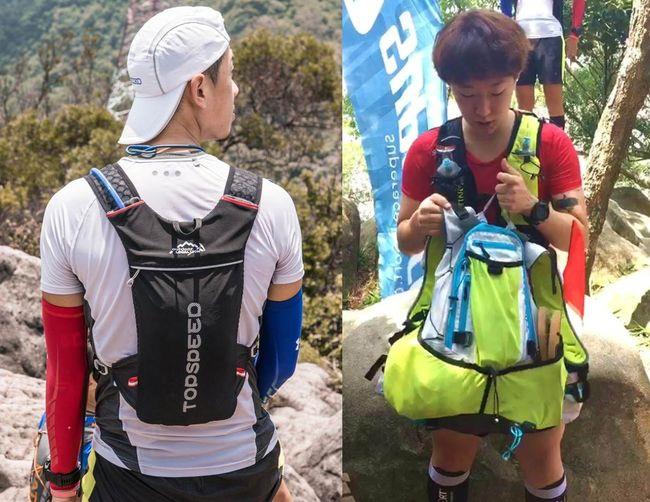
Hydration backpack vs. 20ml Trail Running Backpacks
Trail Running vs Hiking
There’re big difference in training and supplies between trail running and hiking.
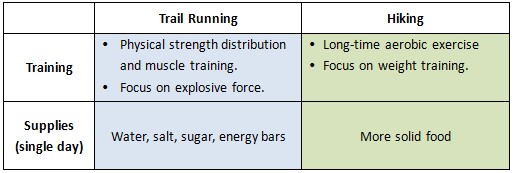
Okay, now you’ve know everything needed. So take out your passion, and LET’S GO RUN IN MOUNTAINS!
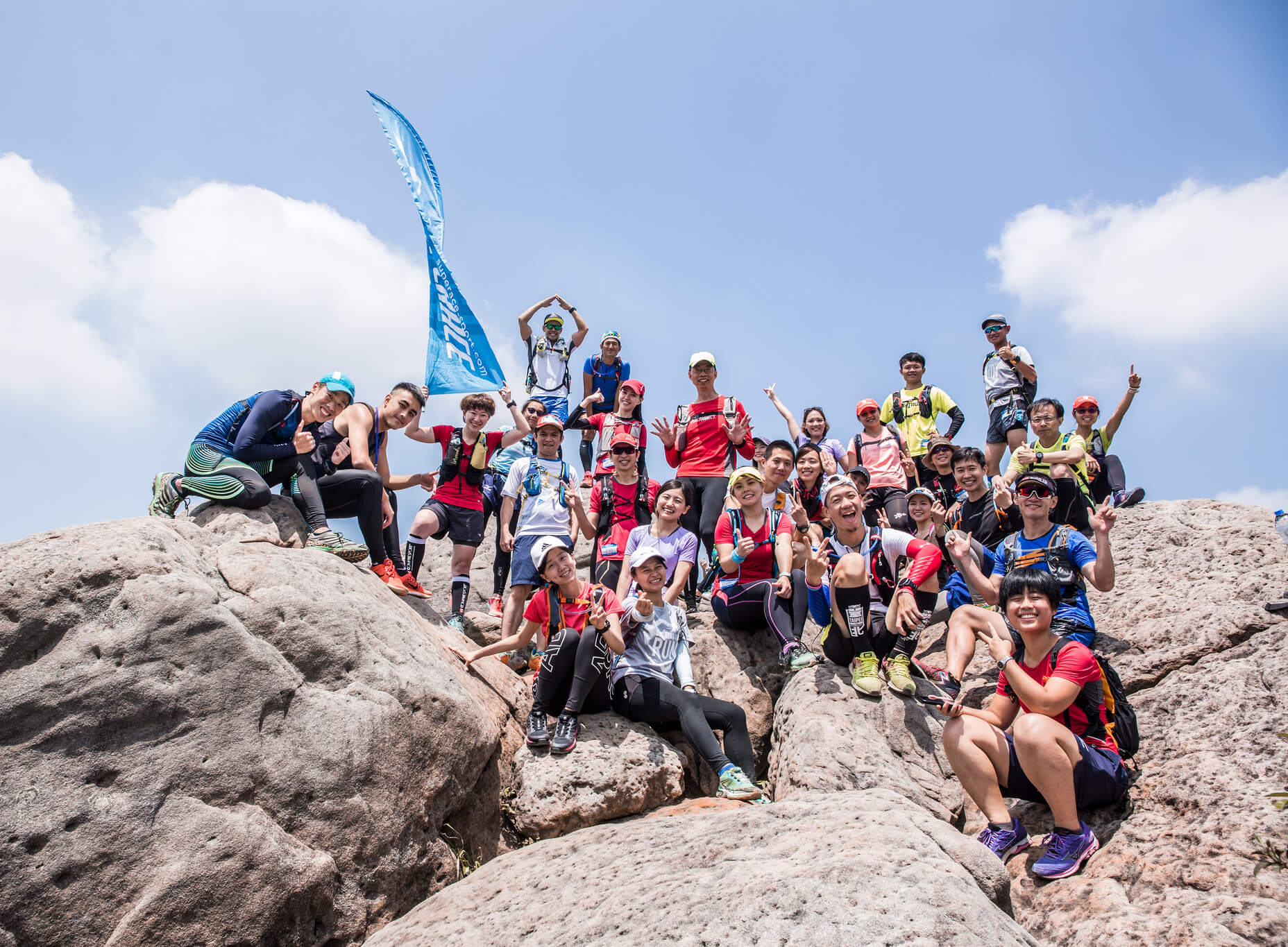
SHARE TO FRIENDS
tell them about SUPERACE